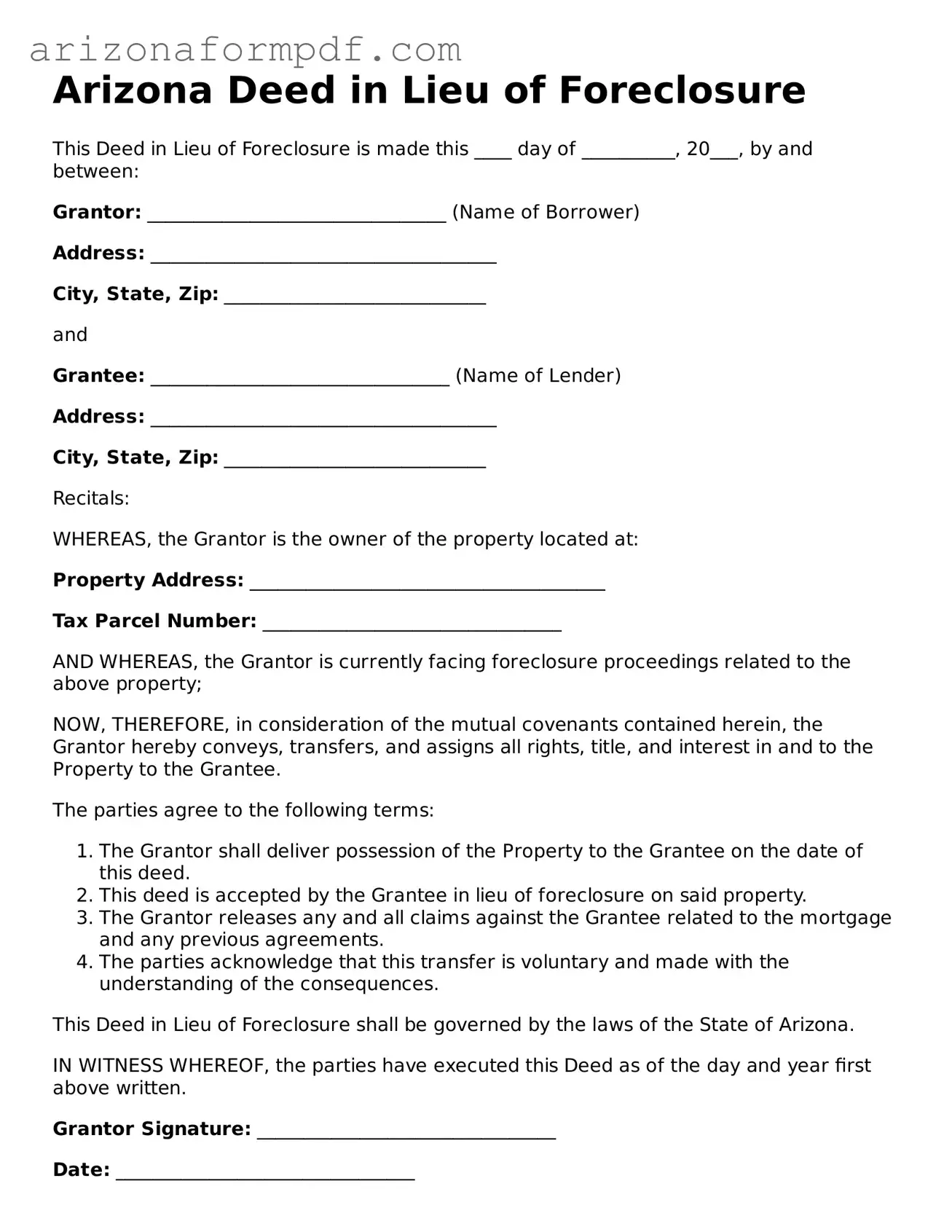Arizona Deed in Lieu of Foreclosure
This Deed in Lieu of Foreclosure is made this ____ day of __________, 20___, by and between:
Grantor: ________________________________ (Name of Borrower)
Address: _____________________________________
City, State, Zip: ____________________________
and
Grantee: ________________________________ (Name of Lender)
Address: _____________________________________
City, State, Zip: ____________________________
Recitals:
WHEREAS, the Grantor is the owner of the property located at:
Property Address: ______________________________________
Tax Parcel Number: ________________________________
AND WHEREAS, the Grantor is currently facing foreclosure proceedings related to the above property;
NOW, THEREFORE, in consideration of the mutual covenants contained herein, the Grantor hereby conveys, transfers, and assigns all rights, title, and interest in and to the Property to the Grantee.
The parties agree to the following terms:
- The Grantor shall deliver possession of the Property to the Grantee on the date of this deed.
- This deed is accepted by the Grantee in lieu of foreclosure on said property.
- The Grantor releases any and all claims against the Grantee related to the mortgage and any previous agreements.
- The parties acknowledge that this transfer is voluntary and made with the understanding of the consequences.
This Deed in Lieu of Foreclosure shall be governed by the laws of the State of Arizona.
IN WITNESS WHEREOF, the parties have executed this Deed as of the day and year first above written.
Grantor Signature: ________________________________
Date: ________________________________
Grantee Signature: ________________________________
Date: ________________________________
State of Arizona
County of ________________________________
On this ____ day of __________, 20___, before me, a Notary Public, personally appeared __________________ as Grantor and __________________ as Grantee, to me known to be the persons described in and who executed the foregoing instrument, and acknowledged that they executed the same as their free and voluntary act and deed.
Notary Public Signature: ________________________________
My commission expires: ________________________________
